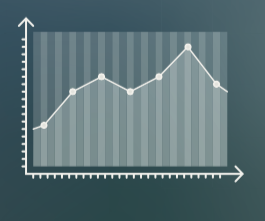11.21.2025
Sausage casings bulletin, November 21, 2025

...

Selling accelerated on the Dalian exchange in response to the sharp decline in palm oil futures in Malaysia with soybean oil contracts down almost 3/4 percent and palm oil prices off more than 1 1/4 percent.
Palm oil futures broke when the January contract failed to hold the psychologically important 4,800 yuan level, but buying at the 50-day moving average and lower Bollinger band limited the decline. Soybean oil futures tested the key 6,000-yuan level, but buying at the 50-day moving average and lower Bollinger band limited the decline and left the most-actively traded January contract above the lower end of the recent trading range.
Range-bound, technically-driven trading continues to guide canola futures. Concerns about harvest delays were cited as the reason for a 1/4 percent (November contract +C$1.00 per tonne) gain on Tuesday, but technically driven buying at the 20-day and 50-day moving averages also supported prices. However, selling at the 10-day moving average and gains in the Canadian dollar limited the advance.
For the second consecutive day, light profit-taking left rapeseed futures down less than 1/4 percent (November contract -€0.50 per tonne). The most-actively traded November contract tested the 10-day moving average but buying at that level limited the decline. Despite the back-to-back decreases, the trend higher in rapeseed futures remains solidly in place due to concerns about crop losses.
Soybean futures were slightly higher in largely technically-driven trade on Tuesday with most contracts gaining less than 1/4 percent (November contract +1 3/4 cents per bushel).
Buying at the 10-day moving average combined with optimism about demand from Chinese importers supported prices early in the session. However, when the November contract failed to move above the high on Monday and failed to breach the psychologically crucial level of $9 per bushel, selling drove soybean contracts from the high of the day to settle near the middle of the range. Funds were reported buyers of 2,500 soybean contracts, 2,000 soybean meal contracts, and 3,000 soybean oil contracts.
Technically driven trading also guided the soybean oil market with most contracts ending marginally higher (December contract +2 basis points per pound). Buying at the 20-day moving average and the gains in soybean futures supported prices early in the U.S. session but selling just below the 200-day moving average limited the gains. Soybean oil futures moved lower with a sharp decline in palm oil prices during the overnight session but rallied early during U.S. trading hours to move back into positive territory for the day. Prices sold off sharply about an hour after the beginning of U.S. trading, pressured by a break in soybean oil prices, but rallied to erase that decline before 11:00 a.m. (CDT). Light oil/meal spreading during the last 30 minutes of trading limited the decline in soybean oil despite another selloff in soybean futures.
Continued concerns about building inventories, lower vegetable oil futures on the Dalian exchange, and technically-driven selling drove palm oil futures down about 2 percent (January contract -43 ringgit per tonne). It was the fifth consecutive day of falling prices, which left the January contract at its lowest level since August 7. Selling at the 50-day moving average and the psychologically critical 2,200-ringgit level also weighed on palm oil values. In addition, the January contract broke through the lower end of the shoulder in a head and shoulders pattern that also triggered selling. Palm oil futures are significantly oversold and due for a correction, but the short term direction of prices is likely to be driven by outlook presentations at the Globoil conference in India, which begins Wednesday.